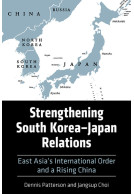Google Books previews are unavailable because you have chosen to turn off third party cookies for enhanced content. Visit our cookies page to review your cookie settings.
Civil Society and Politics in Central Asia (Hardback)
Imprint: University Press of Kentucky
Series: Asia in the New Millennium
Pages: 366
Illustrations: 2 figures, 9 tables
ISBN: 9780813150772
Published: 27th February 2015
Script Academic & Professional
Series: Asia in the New Millennium
Pages: 366
Illustrations: 2 figures, 9 tables
ISBN: 9780813150772
Published: 27th February 2015
Script Academic & Professional
This book will be reprinted and your order will be released in due course.
You'll be £54.00 closer to your next £10.00 credit when you purchase Civil Society and Politics in Central Asia. What's this?
+£4.99 UK Delivery or free UK delivery if order is over £40
(click here for international delivery rates)
Order within the next 1 hour, 21 minutes to get your order processed the next working day!
Need a currency converter? Check XE.com for live rates
(click here for international delivery rates)
Order within the next 1 hour, 21 minutes to get your order processed the next working day!
Need a currency converter? Check XE.com for live rates
The five Central Asian states of Kazakhstan, Uzbekistan, Kyrgyzstan, Tajikistan, and Turkmenistan constitute an area of increasing importance in global politics. The region currently serves as the main route for transporting American and NATO supplies and personnel into Afghanistan. Its Turkic Muslim peoples share ethnic and religious roots with China's Uighurs in neighboring Xinjiang, where some Uighurs have connections to the Taliban in Afghanistan and Pakistan, fueling Beijing's already acute fears of terrorism and separatism.
Perhaps most importantly, the Caspian basin holds immense reserves of oil and natural gas. Countries rich in hydrocarbons -- like Kazakhstan, Turkmenistan, and Uzbekistan -- can benefit greatly from this wealth, but often they must rely on foreign companies (usually backed by foreign governments) to develop these resources. Revolts in Kyrgyzstan (in 2005 and 2010) and Uzbekistan (in 2005); Tajikistan's civil war (in the 1990s); and continued terrorist incidents (2010--2011), strikes, and suicide bombings in Kazakhstan (in 2011) have contributed to concerns about stability in the region.
In C ivil Society and Politics in Central Asia, a prominent group of scholars assesses both the area's manifold problems and its emerging potential, examining the often uneasy relationship between its states and the societies they govern. A meticulously in-depth study, the volume demonstrates the fascinating cultural complexity and diversity of Central Asia. Small, landlocked, and surrounded by larger powers, Central Asian nations have become adept at playing their neighbors against each other in order to maximize their own abilities to maneuver. The essays in this book look beyond the surface of Central Asian politics to discover the forces that are working for political change and continuity in this critical region of the world.
Other titles in the series...
Other titles in University Press of Kentucky...





















